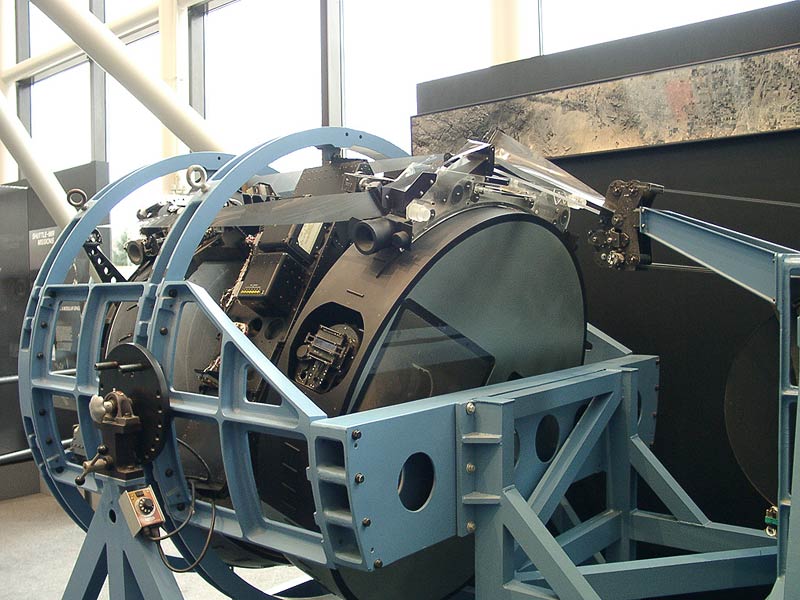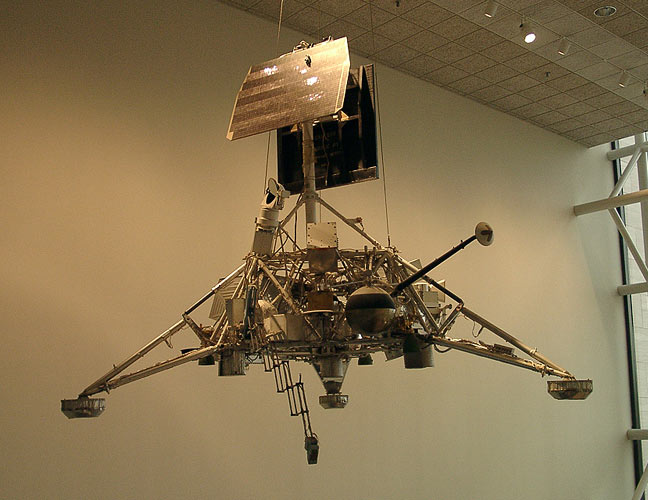
| National Air & Space Museum - space pictures |
This is a picture of one of the Surveyor spacecraft, used for lunar landings between 1966 through 1968. It was used for ground tests. The purpose of the program was to develop basic techniques for soft-landing on the moon, surveying Apollo landing sites, take photographs and perform scientific experiments.

This is a model of the Viking module, used for exploring Mars.
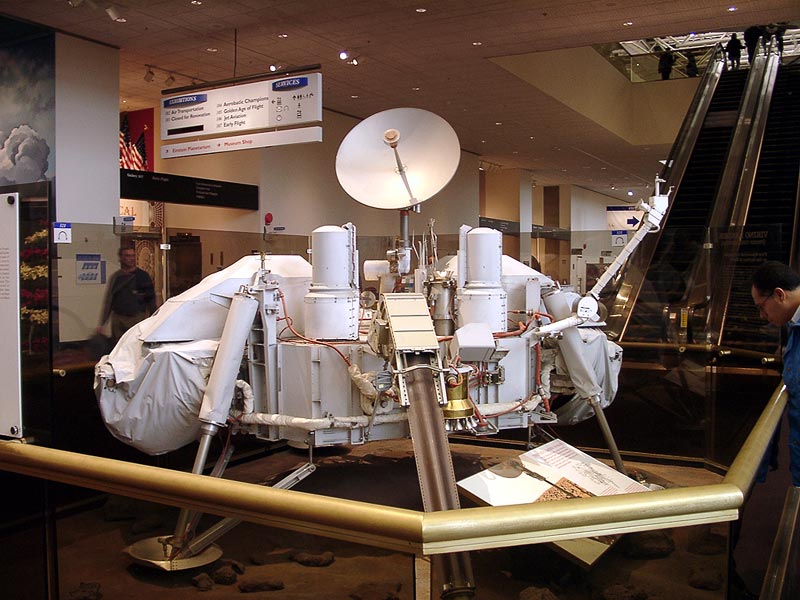
A model of the Hubble Space Telescope.
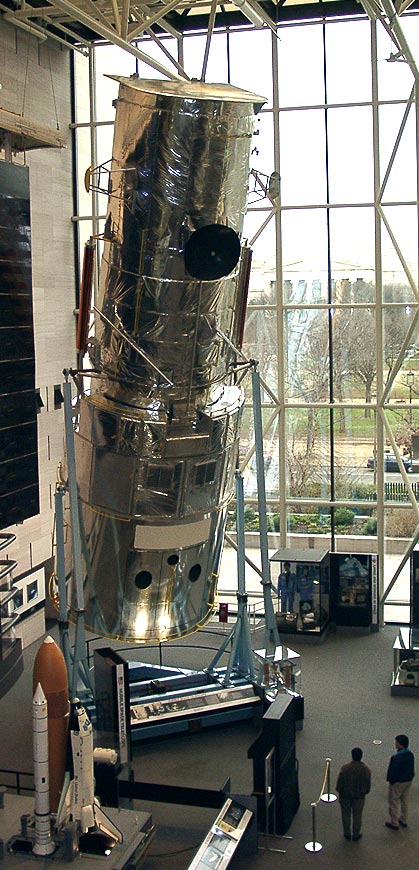
This is the Mercury 7 space capsule.
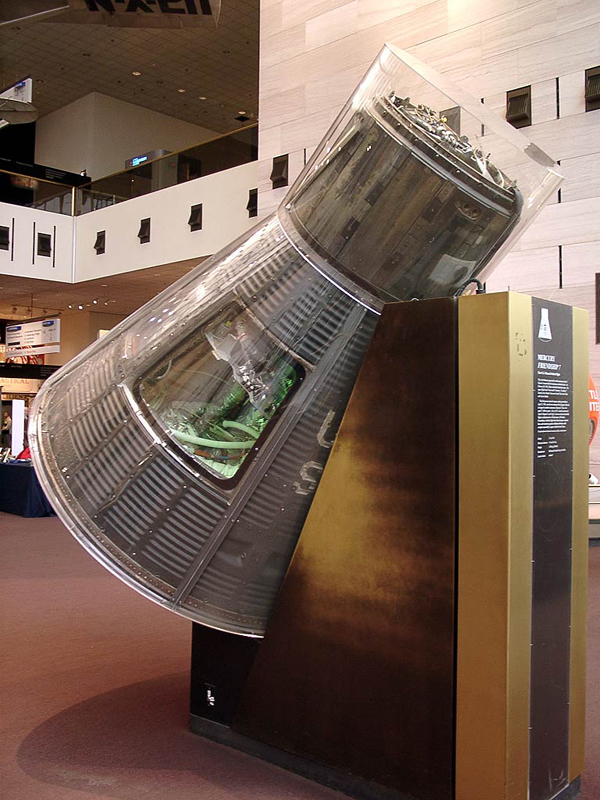
This is one of 12 lunar modules built for the Apollo program. It was meant to be used in a low-level Earth orbit for testing separation, rendezvous and docking with the command and service module. This was the second of the two test modules, but was never used because the first flight was a complete success.
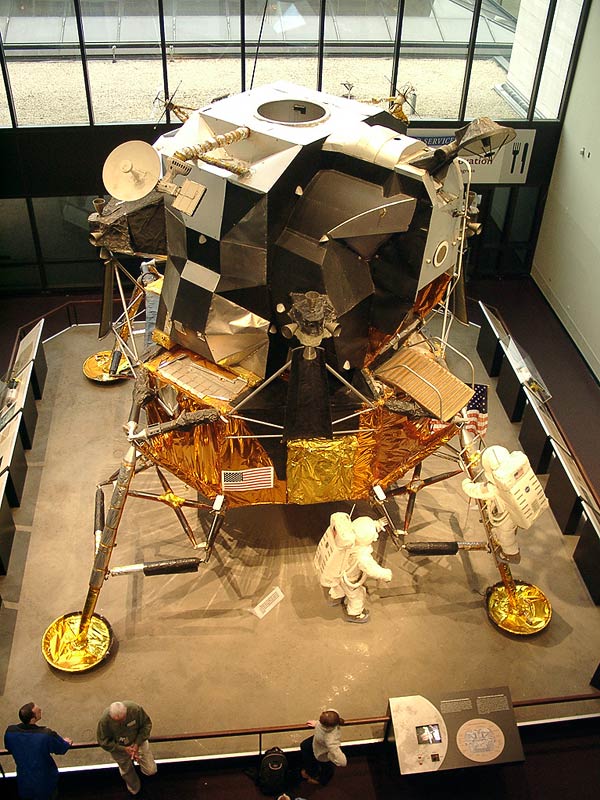
This is a model of the famous 1975 Soviet-American rendezvous in space, the Apollo-Soyuz mission. The Soyuz module is on the right.
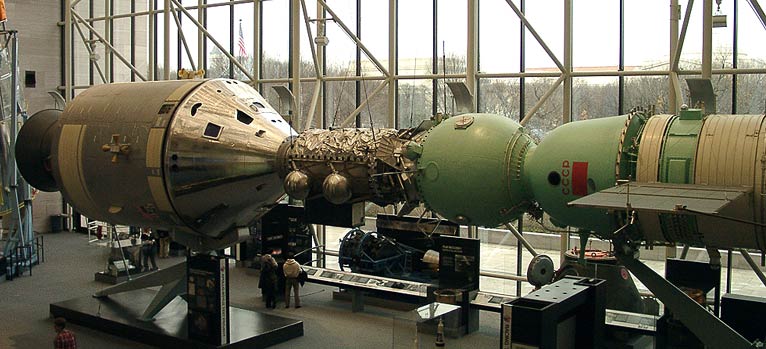
During 1960 to 1972, the United States used a a reconnaissance satellite codenamed "Corona" by the CIA to spy on the Soviet Union. To cover up it's real purpose, it was given the name Discoverer and described for use as a scientific research program. There were more than 100 Corona missions, resulting in over 800,000 photographs. This is what it looks like. You can see the path of the film through the camera. You can click here to get more information about the Corona Project.
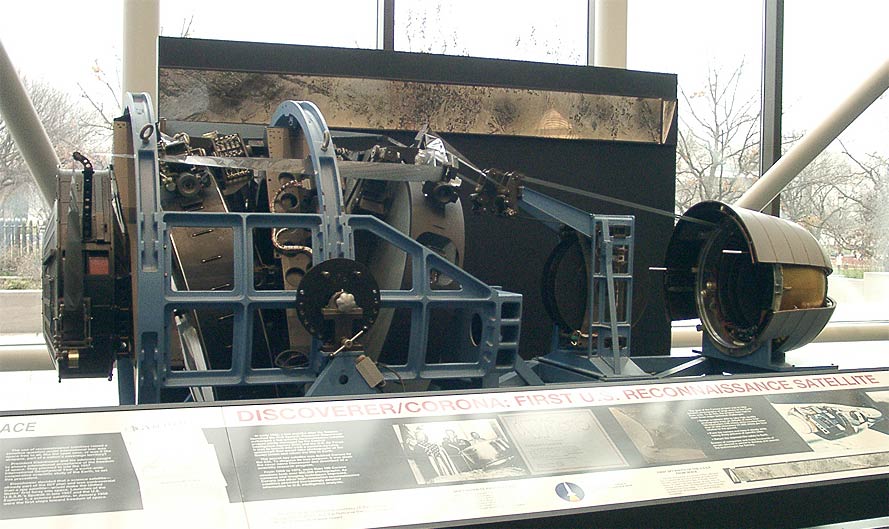
This is a closeup of the front.

This is the back of the camera.
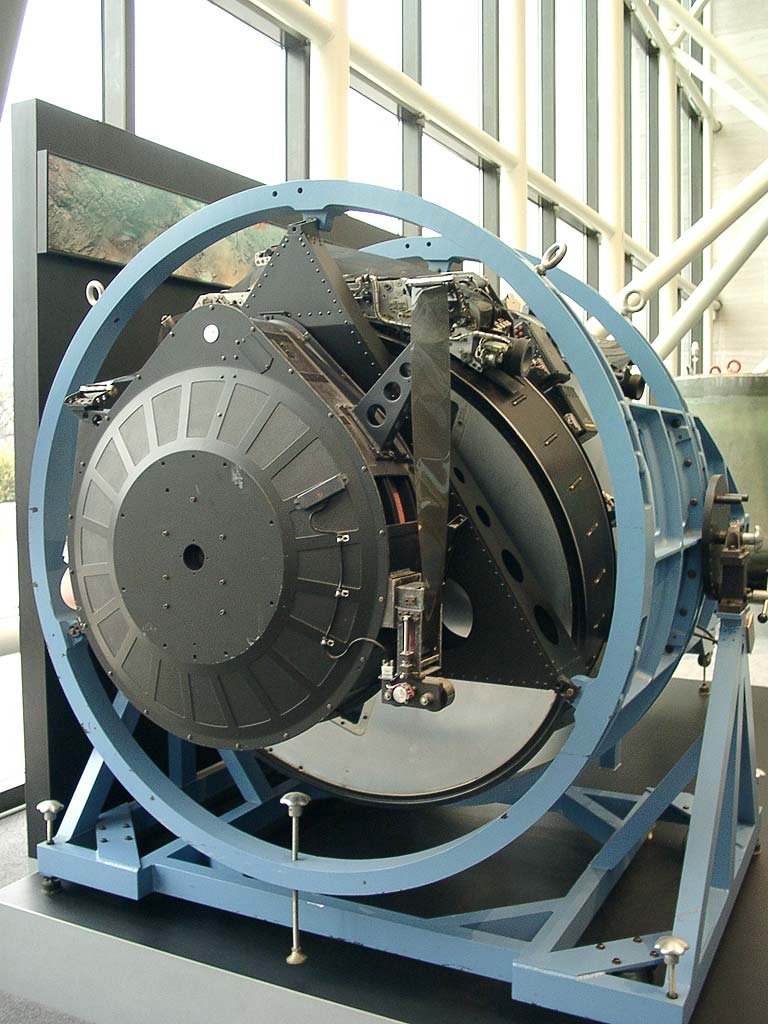
This shows the two cameras, which rotated in such a fashion that you could take 3D pictures of ground targets.
